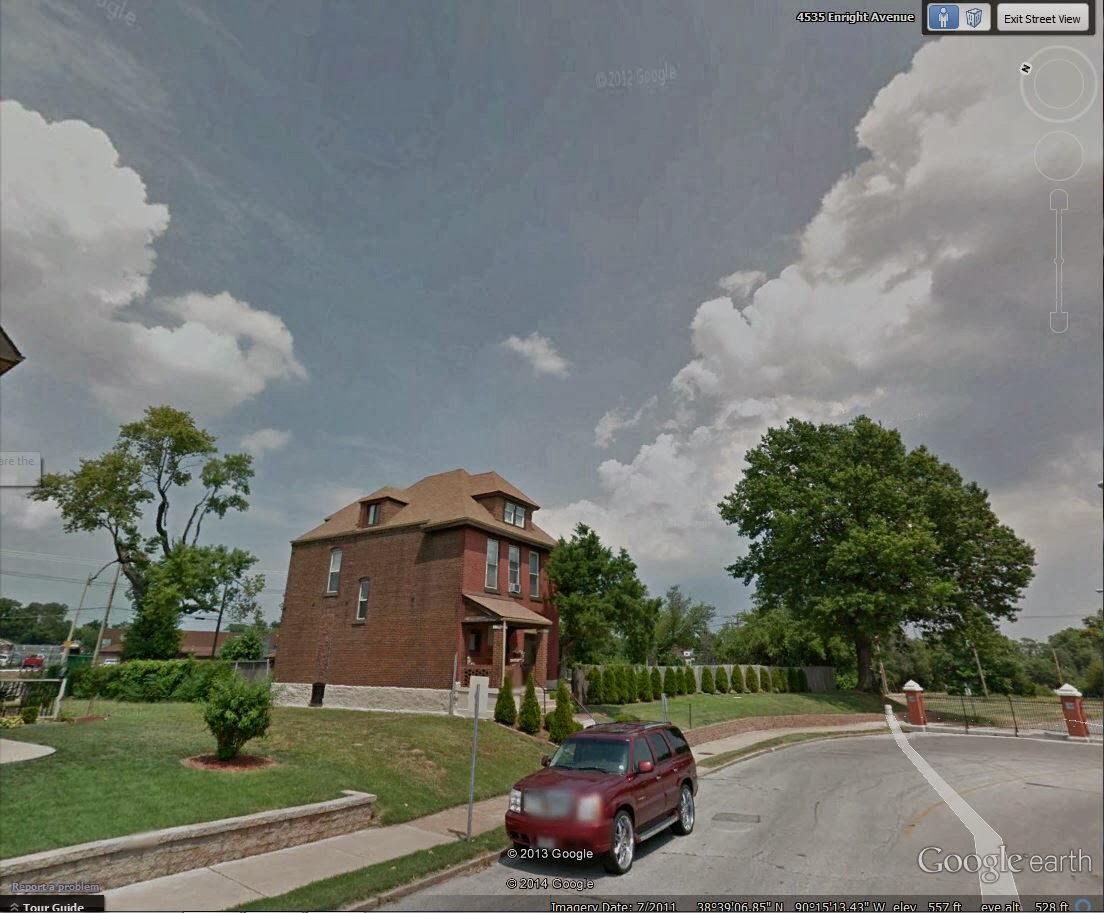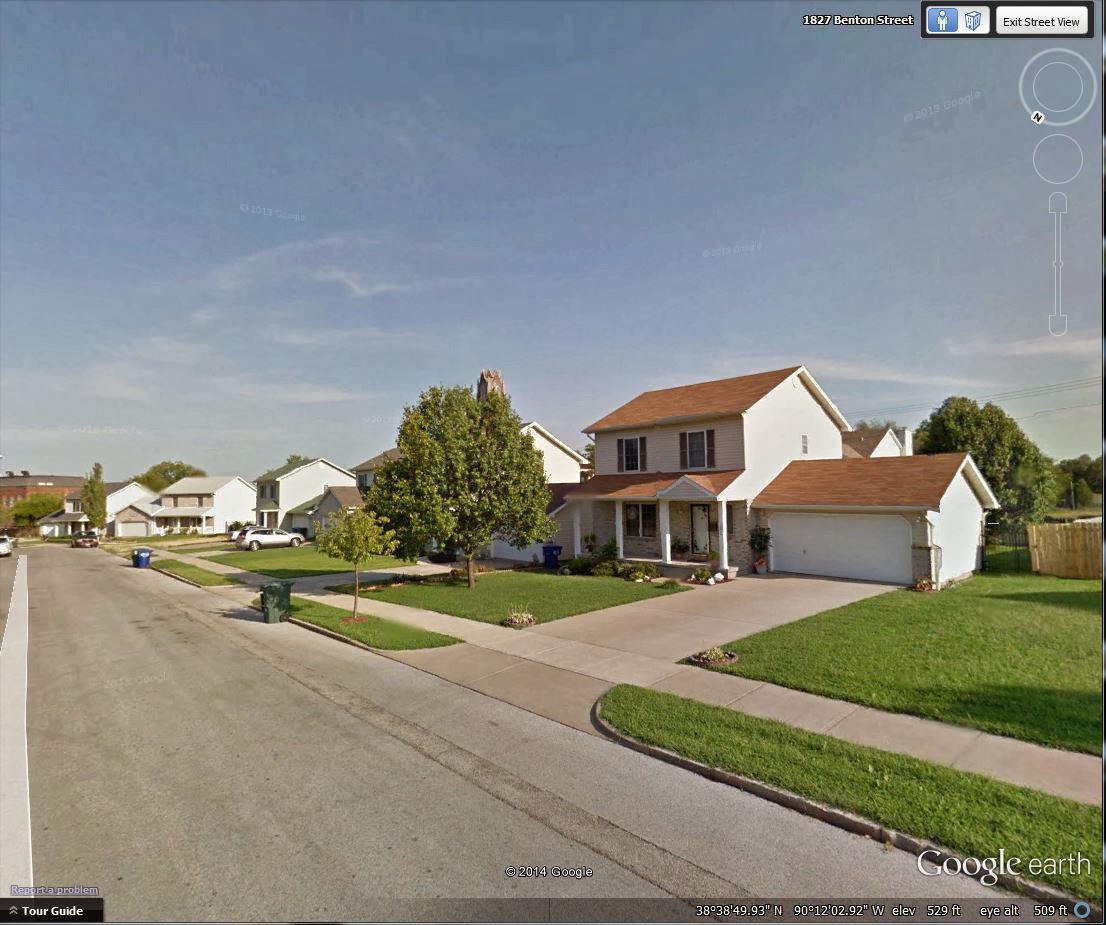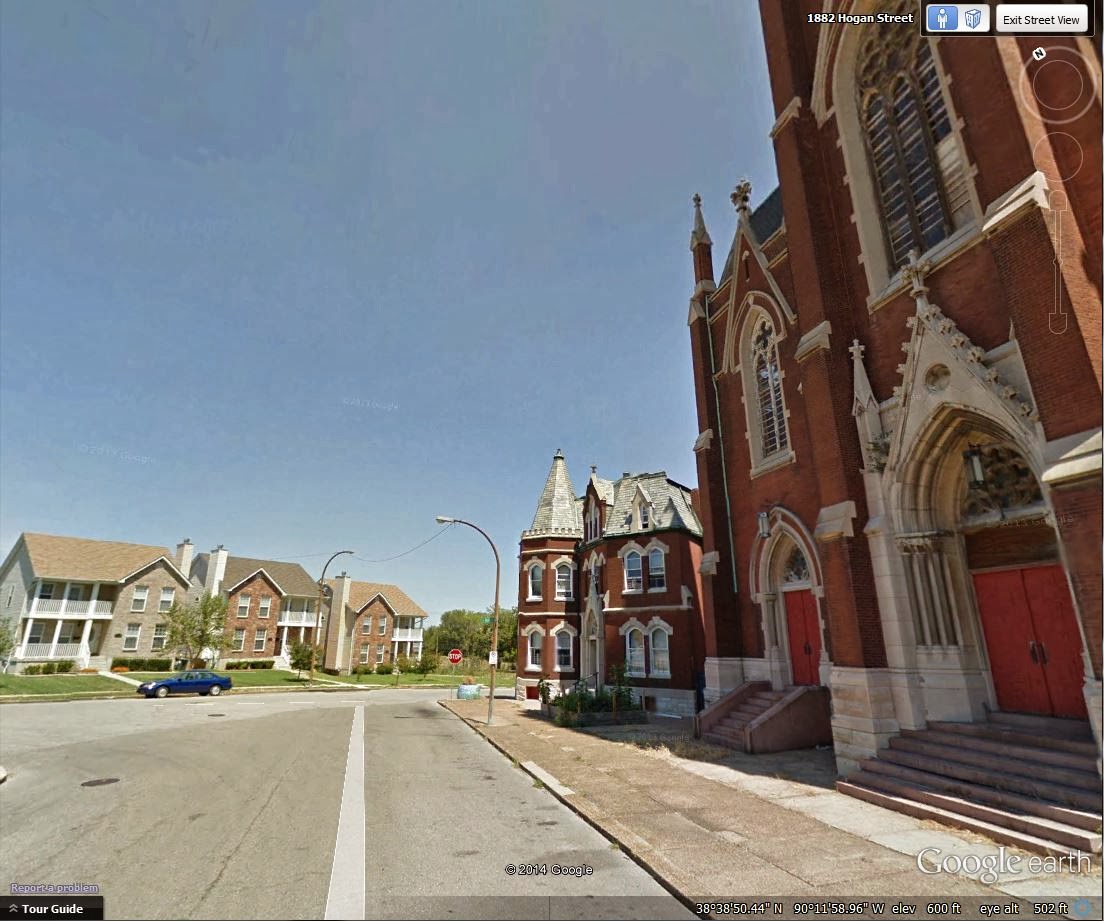Local
Mourners and community leaders gather for annual candlelight service for victims of homicides
http://www.stltoday.com/news/mourners-and-community-leaders-gather-for-annual-candlelight-service-for/article_18b1465d-6bca-55bc-b027-0f3fcddbd66a.html
Two St. Louis Neighborhoods Ranked Among America’s ‘Most Dangerous’
April 30, 2013 7:23 AM
Click on picture to enlarge
Click on picture to enlarge
Click on picture to enlarge
Click on picture to enlarge
PUTTING FAITH
IN POLICE
Terry Burgess’ lip curled as St. Louis police Sgt. Roger Engelhardt laid notebooks and file folders across her dining room table. A ceiling fan hummed above them, its metal pull cords clinking as unsteady blades cut the air. Burgess turned it off. Silence.
Seven months had passed since Burgess’ grandson, Pierre Childs, 16, was gunned down in front of the house she then shared with him and his mother.
No arrests had been made.
And Burgess had lost count of how many times Engelhardt had failed to return her calls.
The sergeant glanced at his watch. He looked out the window. His shoulders loosened at the sound of a knock at the door.
“Come in,” Burgess shouted.
The mood changed when Maurice McIntosh walked in. Burgess, 47, knew him as a minister, not a cop. He greeted her with a beaming smile. Her face lit up.
Then she broke the awkward silence by sharing the latest rumors about her grandson’s killer. Nicknames flew. McIntosh called some of his contacts to try to fill in blanks. Engelhardt started taking notes.
A case that was growing cold suddenly started to heat up. And a family that felt forgotten by police started feeling remembered.
The moment unfolded exactly as Lt. Fred Turner, then homicide unit commander, envisioned about six years ago when he recruited ministers of multiple faiths as volunteer liaisons between families of the murdered and detectives.
They call themselves the Homicide Ministers and Community Alliance.
Turner, now retired, recognized that a major impediment to solving a homicide is convincing wary families that detectives care enough to try.
It’s no secret that the odds of an arrest in a given murder aren’t great. Social circles often overlap. So attitudes of family and friends of the newly slain may be “poisoned” by a perception of police apathy from others frustrated by a lack of movement in their own cases.
In addition, murder witnesses are many times criminals themselves, and naturally reluctant to talk to police.
As an ordained minister, Turner believed faith could be an answer.
“People seem to want to listen to a minister rather than someone from the homicide unit,” he explained. “There’s a spiritual side of people that comes out in these situations. People are looking to the church for salvation, or relief from grief.”
And without the ministers, Engelhardt, 46, figures he wouldn’t have as much hope of catching Pierre’s killer — or at least of giving the family the comfort of knowing he really tried.
“Unexpected kindness is a powerful thing,” Engelhardt said. “You remember how you were treated in big moments in your life, like when you got married, when your kids were born or your parents died. In these moments, if we can show respect, there is no downside to that.”
WITNESSES CRUCIAL
Police departments measure homicide investigation success with a “clearance rate” reported annually to the FBI. A case is “cleared” when a suspect is arrested — regardless of whether prosecutors pursue charges — or dies.
There is a twist: The rate compares murders in a given year with arrests made the same year, even arrests for crimes that occurred in previous years.
The national rate among cities most similar to St. Louis was about 55 percent in 2013, the year Pierre died. Police here reported 48 percent. A Post-Dispatch analysis shows there were arrests in about 41 percent of the 120 murders that occurred in the city that year.
The St. Louis rate once hovered near 80 percent but declined with the rest of the country as drugs became the main issue in most killings, said Rick Rosenfeld, a University of Missouri criminologist.
“Our overall rate of homicide is 40 percent lower than it was in the early 1990s, but the cases that come to the attention of police are more likely now than in the past to involve people who are deeply embedded in criminal activity,” Rosenfeld explained. “The ones that have gone away were the ones that were easier to solve.”
An FBI study in 2008 noted that departments with high clearance rates had detectives each managing four to six cases annually. St. Louis police say their 24 homicide detectives handle about twice that.
Chief Sam Dotson said it’s a question of how best to deploy resources. Assigning patrols to focus on “hot spots” can prevent murders, he said.
The most significant factor in solving a homicide is a cooperating witness, according to a University of Maryland study in 1999 considered still the most comprehensive of its kind. It examined 800 killings in four unnamed cities in 1994-95 and found witnesses were the key in almost half the cleared cases.
PIERRE NOT TARGET
Pierre fit the traits of most of the city’s homicide victims over the past three years: male, black, under 29, with a criminal record. Police believe he was not the target but a bystander to one group’s attack on rivals.
At least a dozen people were nearby when Pierre was gunned down about 6 p.m. May 7 along the 4800 block of Anderson Avenue. He was walking home from a store with his 4-year-old cousin, who was not hurt. Pierre’s mother watched from her porch as gunfire erupted, police said.
“This is going to be a tough one to clear, no matter how many detectives you have on the case,” Rosenfeld predicted. “That’s why the assistance that the homicide unit receives from the ministers is essential.”
McIntosh was on Pierre’s case from the start. At the funeral, he and Engelhardt came to know Pierre as he was known to his family: A member of the ROTC program at Sumner High School who would have been in football practice the day of his murder had it not been canceled. He also was the father of a 2-year-old girl.
The family surprised McIntosh by asking him to perform the graveside ceremony. His soft-spoken voice was barely audible over the wails of Pierre’s mother, Carolyn “Shenelle” Burgess, who nearly collapsed.
In the following weeks, McIntosh made several trips to the family home, bringing clothes, food and other donations. He tried to help Pierre’s mother and grandmother relocate after they said having the murder site just beyond their front door was too much to bear.
“Every place I’ve suggested for them so far hasn’t worked because they’ve all been too close to the (murder) scene of another family member or friend of the family’s,” McIntosh said.
AN IDEA BLOSSOMS
Turner insisted that the ministers pass criminal background checks and his own “sniff test” to weed out potential problems.
When Turner retired, then-Chief Dan Isom pledged to keep the group going and said he had just the man for it: Capt. Mike Sack. Before joining the department in 1994, Sack served four years as a Catholic priest. He now oversees violent-crime units, including homicide.
“Fred started this because he wanted to win over St. Louis one family at a time, and he knew a pastor can engage on a personal level and a spiritual level and share in the grief,” Sack said recently. “My guys remain emotionally detached from it because they can’t get wrapped up in the family’s needs, which can detract from their effectiveness at solving cases.”
The ministers have spawned multiple benefits, Sack said. Some reluctant witnesses have found the inspiration to talk. Sometimes, people drawn toward crime have turned themselves around.
Measuring the impact is impossible, Sack said, but he’s certain there is a positive effect. Families interact more with detectives.
Some hardened detectives took a while to buy into the idea, said Engelhardt, who started his career 22 years ago.
“It’s the cop culture, it’s not the macho thing to do, but I’m a softie, and I guess I get away with it because I look like this,” quipped Engelhardt, a former amateur boxer who carries 280 pounds on a 6-foot-3 frame.
“I think it grounds these detectives and helps them realize that, ‘Hey, this is someone’s family,’ and we’re not just making widgets up here, this is affecting someone’s life. Otherwise, it can get like an assembly line.”
The ministers meet monthly for inspiration, case updates and refreshers on topics such as victim resources, staying safe and managing grief.
Within 48 hours of a homicide, detectives email the group with basic information and family contacts. McIntosh, 46, was a minister in training when he was put on Pierre’s case.
The assigned minister is expected to offer whatever support is possible to a family — if it’s willing — for at least a year.
The involvement varies. Last summer, the group’s Imam performed the Muslim ritual of washing the body of a Bosnian teen who was gunned down during a robbery of his family’s store. Some families decline help.
Attending funerals alongside detectives is mandatory, as is providing condolences on behalf of the police department at memorial services. Engelhardt said he sees the results.
“We expected to be not welcome or treated with indifference or outright disdain,” he said. “Ninety percent of the time, we were greeted with applause. It changed me.”
When McIntosh asked Engelhardt to raise his hand and be recognized by the hundreds at Pierre’s funeral, 10 days had passed since the killing.
That closes the sweet spot for murder investigations. About 60 percent of accused killers prosecuted here in the past three years were charged within 10 days, according to the newspaper analysis, and 71 percent within 30 days.
SEEING POLICE CARE
Detectives have yet to seek charges in Pierre’s case.
But Engelhardt said his visit with Pierre’s grandmother and McIntosh did, indirectly, prompt more action on the case.
Burgess said she was impressed that day when Engelhardt described all the investigators’ steps.
“Wow, I had no idea,” she told him. “All this time I kept thinking you forgot about me, but you didn’t. You just didn’t have anything to tell me … You know, I was mad at you. I mean, really mad.”
Engelhardt replied, “If it makes you feel better to be mad at me, then be mad at me.” He added, “I wish I could say you’re the only one.”
Before they parted ways, McIntosh lingered, catching up on the latest about some of Burgess’ relatives as if they were old friends.
“It’s good to know that after seven months, they still care,” Burgess said. Engelhardt “doesn’t have the time to call me or listen to me while I cry because I’m frustrated, and these people have been there for us.
“At least I know he’s still seriously working the case.”
On March 5, Burgess invited about two dozen relatives and friends to Pierre’s grave on what would have been his 17th birthday.
They held hands and released balloons.
McIntosh led them in a prayer for peace and justice.
Walker Moskop of the Post-Dispatch contributed to this report
View 4 Comments
I had to add this picture when I seen it because it reminded me so much of the above picture,this building is in Memphis

























































